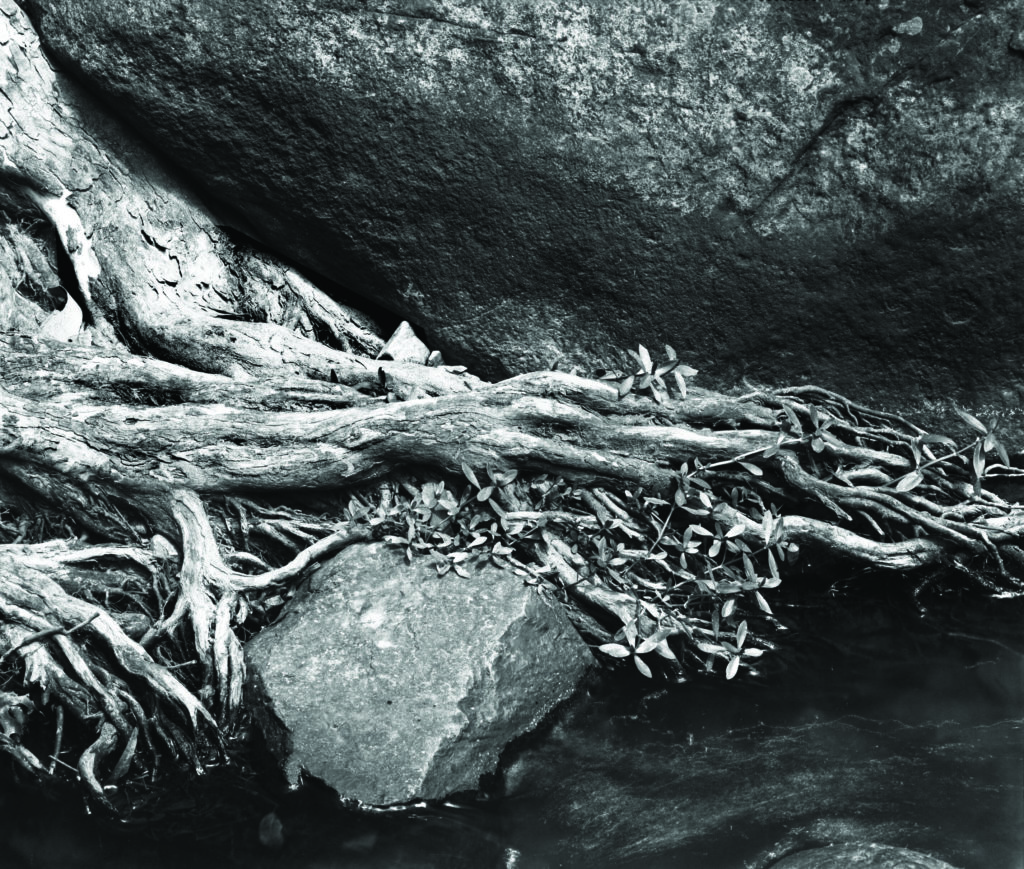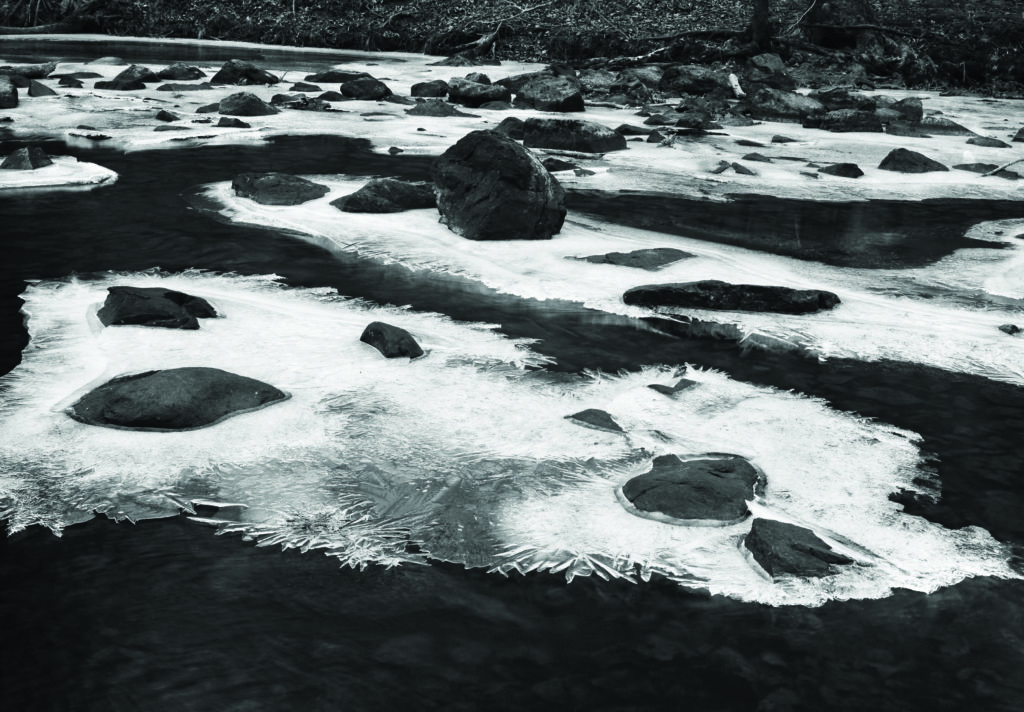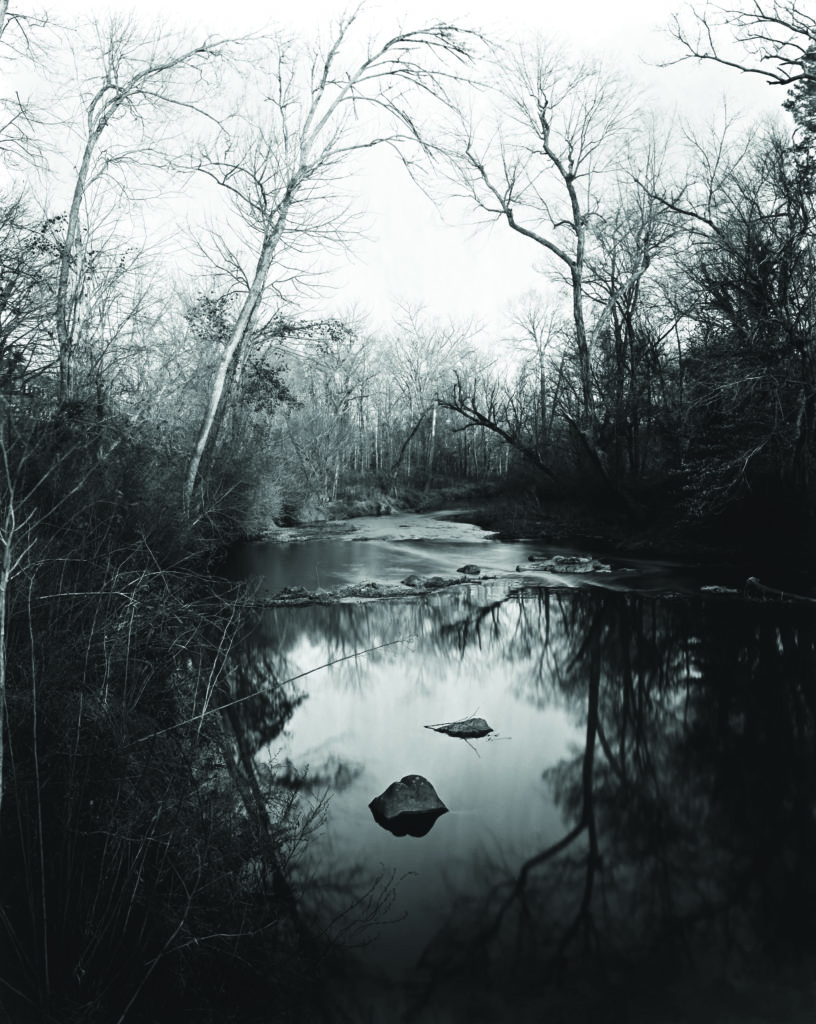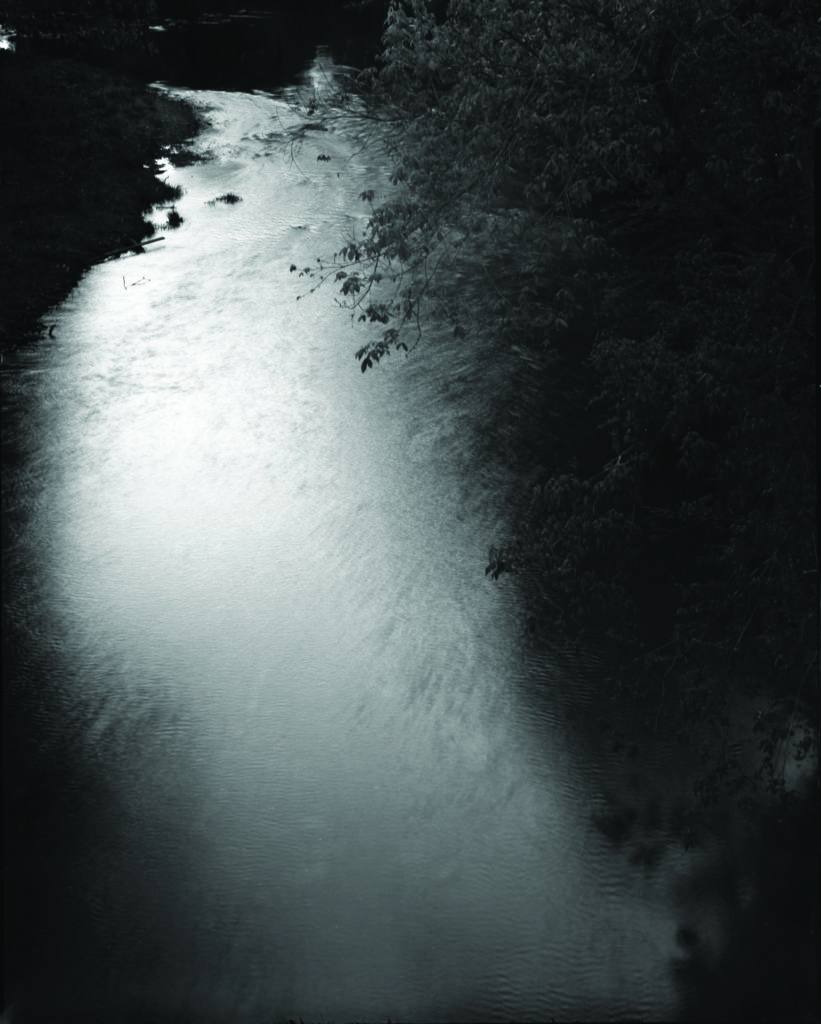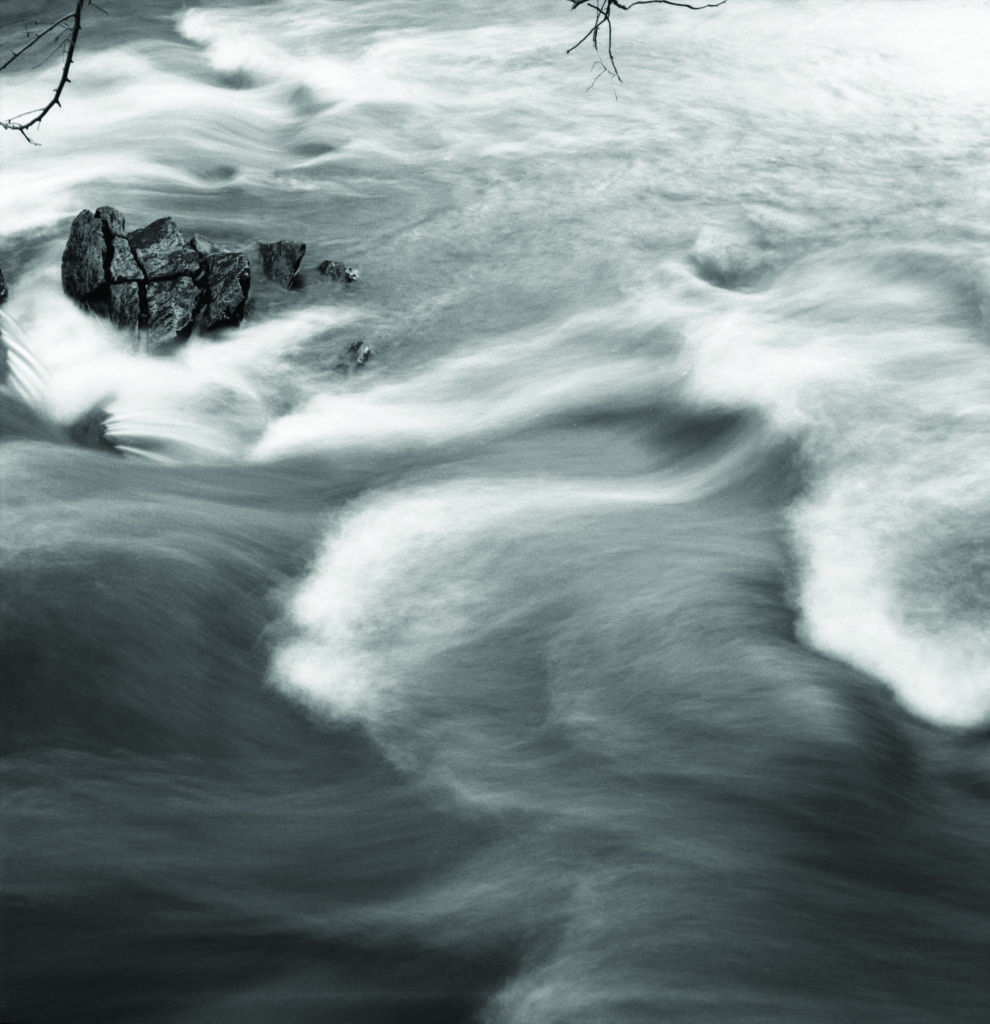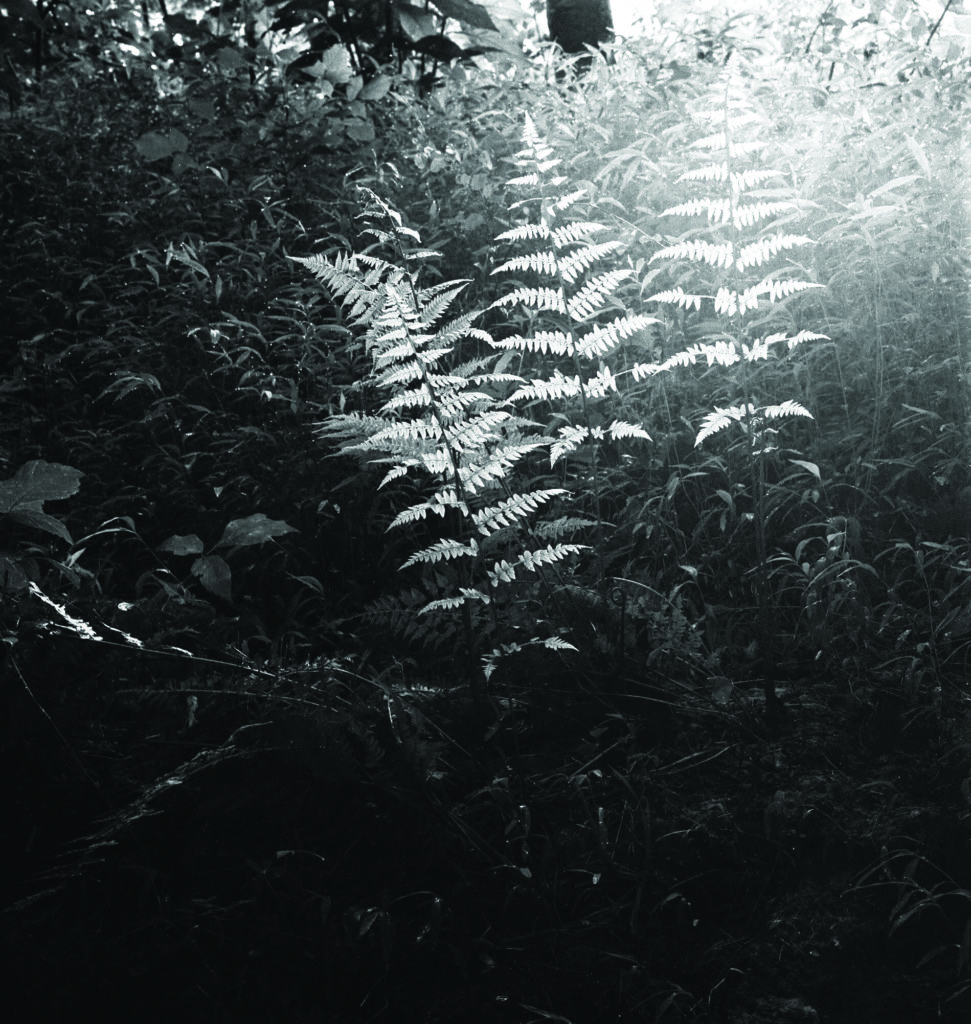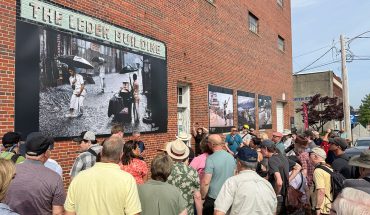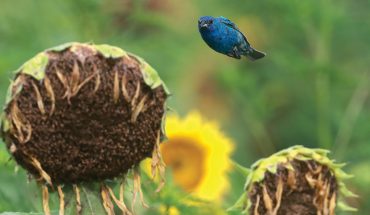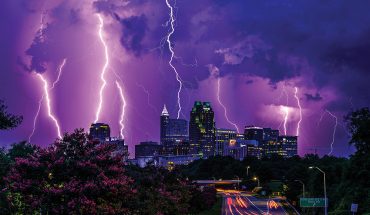Photographer Holden Richards has spent that last 10 years capturing different views of the Eno River with an antique camera.
by John Gessner | photography by Holden Richards
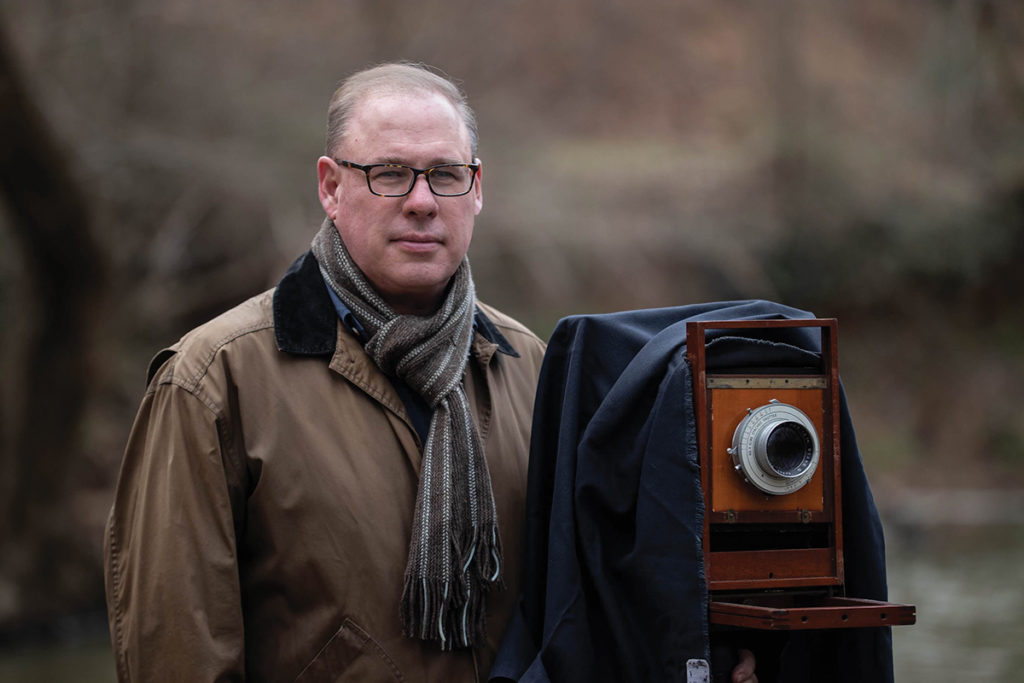
The Eno River is named for the Native Americans that lived and traded along its banks. It swiftly winds through 40 miles of Orange and Durham counties. And if you have visited the Eno on any given day during the past 10 years, chances are you’ve spotted a lone photographer in the middle of the river, a tall man wearing glasses and a baseball cap.
That would be Holden Richards, a self-taught fine art photographer and master printer.
His camera of choice is a rare, 125-year-old Ak-sar-ben 8×10 view camera. “The camera chose me; it was offered for sale by someone who thought I might put it to good use,” says Richards. “I’ve been lucky that way.”
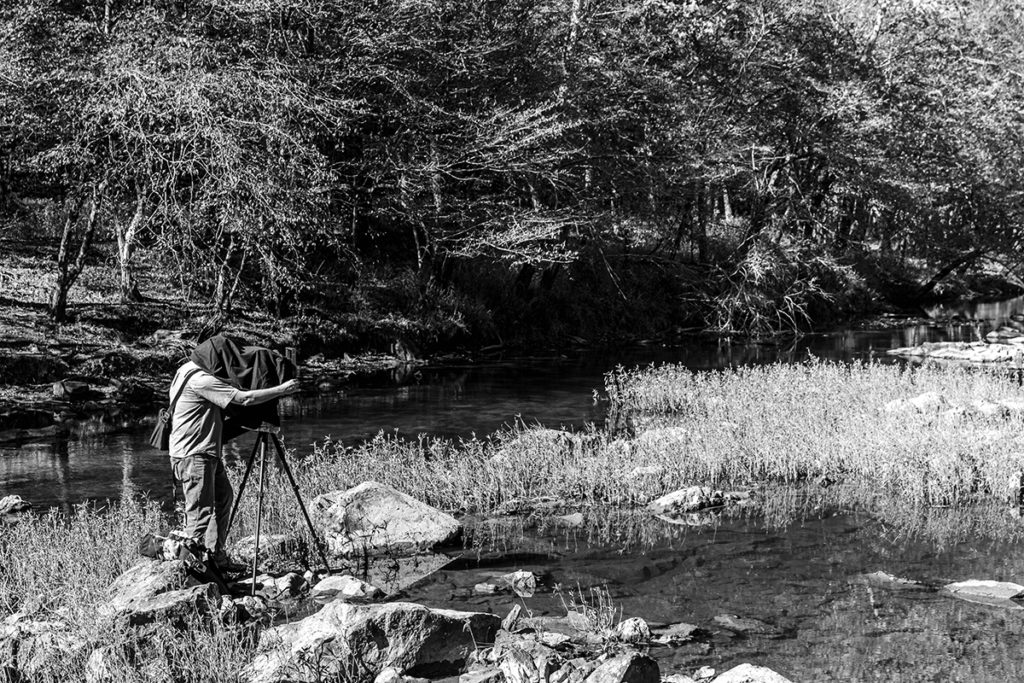
Vintage cameras have an aura of sorts: they are survivors. Simply built of wood, metal and glass, there are no high-tech bells and whistles to distract you from the task at hand — or to offer a shortcut to a better photo. These old view cameras are just ground glass, bellows and a shuttered lens.
These cameras are heavy, cumbersome and require extensive knowledge and training to properly use them — and that’s just to properly expose a sheet of film. The printing takes as much patience and practice to master. (Many photographers hire photographic printers so they do not have to tackle another skill set.)
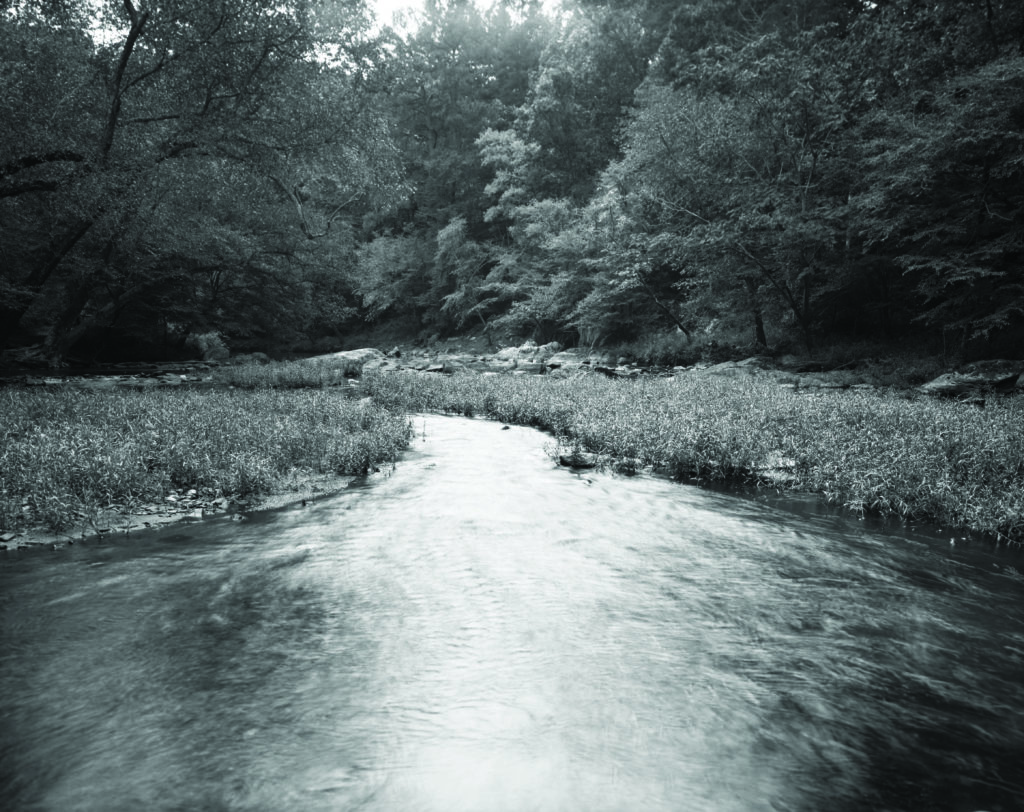
Richards has mastered both by tenacious trial and error. He has whittled down the essence of shooting successfully and efficiently so he can get to the right spot on the river, at the right time of day, and focus on the ever-changing beauty of the Eno River.
“I only know what I want to shoot when it comes into view,” he says. The endless variation of light on the scenery will pique his interest, causing him to pause and expose a sheet or two.
To do this, Richards is often traversing to the middle of the river, carrying 20 pounds of equipment on his back. And while a typical film camera allows 36 exposures per sheet, these cameras can only hold two exposures at a time.
“With an 8×10 camera, if you find four scenes worth your time and effort — and make those four exposures successfully — you’ve had a very good day,” says Richards. He uses his hand and lens cap as the shutter, his brain as the timer.
He’s brought this endurance, persistence and creativity to the Eno over the past 10 years. Richards has walked almost the whole trail system, but certain spots catch his attention time and time again.
Few’s Ford, Cole Mill and the Cabelands sections of the river have intriguing topography, geology and forests. He tends to get attached to a certain turn in the river or a particular tree.
“I go visit them like old friends,” he says. Over thousands of sheets of film, Richards has generated intensely beautiful images, many of which are gathered in a book called Riverwalk, which Richards self-published in 2021. A few images from his book are showcased on the following pages.
Richards studied painting and composition at the University of North Carolina at Chapel Hill, but went on to a career in computer programming. He was always looking for a way to get back into composition and found that the camera was a natural way to do that.
His observations of the visual art that preceded photography became the basis of how he practices his photographic work.
“I have always tried to let some of that aesthetic inform the process,” says Richards. When Richards moved to Hillsborough 23 years ago, he often walked the open lands and rivers of Orange County.
His work-at-home career, spanning 30 years, allowed him to take daily walks. It became obvious to him that the Eno was essential to the town’s growth, formation and zeitgeist.
“I walked it daily. It was a natural subject for me as I didn’t want to be a portrait photographer or deal with man-made anything compositionally,” says Richards.
He started with photography in his 40s. To learn the craft he attended the Penland School of Craft to study View Camera with Jim Stone, a visiting professor from the University of New Mexico, which helped pull his workflow into focus.
Richards also sought out the previous generation of film photography masters in North Carolina, specifically John Menapace, Elizabeth Matheson, John Rosenthal and David Simonton.
This group of well-seasoned artists helped Richards with practical and fundamental questions about the processes and equipment needed to be successful in film photography.
Over time, they reviewed his evolving portfolio. “Their collective experience was invaluable to me because I had few peers locally doing film photography seriously,” says Richards.
Richards first mastered the 35mm camera, the easiest to handle and have developed. Then he moved up to medium-format film and cameras. “I had been printing 35mm in the darkroom getting good results, but after printing images from rolls of medium format film I saw the improvements in tone and detail immediately,” says Richards.
Then he made the leap to the Big Kahuna of large format photography, the 8×10 view camera. This format would allow him to contact-print larger images, rather than losing resolution to make a printed photo bigger. “I was dreaming of rich contact prints even in my earliest stages of learning large format,” he says.
“Turns out the transition wasn’t as easy as you would think. It’s just suddenly there are 10 inches of glass in the viewfinder versus 2.”
Between the walks to find his vantage points and the arduous work of capturing the images, Richards’ photographic project along the Eno has become a meditation of sorts.
“Using a large antique film camera creates a need for going slow, for being intentional. It’s all manual,” says Richards. “It means I observe everything, take it all in — mind and body cooperate in the creation of these images.”
This article originally appeared in the January 2023 issue of WALTER magazine.

